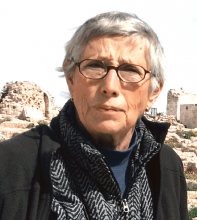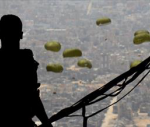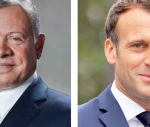You are here
‘No dialogue between Syrians’
Oct 05,2016 - Last updated at Oct 05,2016
Damascus is an island of relative normality at the centre of a storm.
While most of its suburbs have been cleared of insurgents by the army, there is still fighting in Al Hami, 8.5 kilometres from the capital, and a standoff at Qudsaya, 5 kilometres distant.
Following the occupation by fighters from Jabhat Al Nusra (rebranded as Jabhat Fateh Al Sham) and surrounded by the army, the formerly peaceful town of Al Hami has become a flashpoint.
So far, Al Nusra elements, some driven from Qudsaya, refused to evacuate in talks with leaders seeking an end to violence and “reconciliation”.
Until the situation is resolved, the fighters are endangering civilians trapped in these towns.
The government is exerting pressure to get the fighters to depart or seek amnesty — as they are doing in Al Waer, next to Homs — but so far this has not worked.
Al Nusra is losing ground in Rif Damascus and does not want to cede assets.
Civilians from Al Hami and Qudsaya are either trapped or fleeing, hoping to return to their homes soon, if their houses still exist.
Last weekend, thousands of civilians in Qudsaya protested against the refusal of the insurgents to depart.
Armed occupation of inhabited areas is the model the insurgents have followed during this deadly and destructive five-and-a-half years of conflict, although basing armed men and planting positions near “civilian objects” is contrary to international law.
UN mediator Staffan de Mistura made this point when briefing the Security Council last week. He also said that more than half of the insurgents in east Aleppo, held by armed groups since 2012, are from Al Nusra.
Consequently, civilians across Syria have been continuously subjected to the dangerous and destructive presence of insurgents ever since the conflict began.
Early on, armed elements were largely constituted by local boys given guns by neighbourhood gang bosses with differing agendas.
Some served the outlawed Muslim Brotherhood, some were hired by expatriate Syrians and other outsiders to stand against the government of President Bashar Assad.
These armed boys attacked the army, the police and public institutions or hijacked cars.
They did not have clear political agendas and did not understand those who did, and proclaimed they were protesting against the government in order to plant “democracy” in Syria.
By contrast, the taqfiris, backed by Turkey, Saudi Arabia and Qatar, who began to take over the armed elements in 2013, have clear agendas. They seek to transform Syria into an “Islamic State” as defined by leading figures and clerical mentors. But each grouping has its own vision and ambition.
The factions fight each other off and on. Consequently, they cannot form a united front against the government.
It is a unified force, which clings to the present secular system and is prepared to defend it with the blood of Syria’s young men, bolstered by fighters from Lebanon, Iraq and Iran as well as Russian air power.
War makes strange allies in arms.
It is normal that takfiris would attract the support of regional Sunni powers but not the Christian/secular West, while the secular Syrian government of a country where the majority of the population is Sunni is supported by Shiite Muslims and Russian Orthodox Christian powers.
Sources in Damascus say the government and the Russians are determined to wrest eastern Aleppo from insurgents by the end of the year. The price will be high unless the US and Russia stop dickering over details of a ceasefire, impose a cessation of hostilities, and relaunch talks between Syrians.
Sawsan Zakzak, a member of the Women’s Advisory Board established to take part in negotiations, says: “This is the worst time for Syria, not just Aleppo. When the war in Aleppo becomes hot for the armed opposition, it will launch war in rural Hama.
“I’m afraid no party can win, can be the winner by military means. If we remain in this situation, splitting Syria will become a danger.”
She insists that talks must resume. Unfortunately, the US and Russia, which are meant to sponsor both a ceasefire and negotiations, do not have a “common” agenda.
The solution does not mean the departure of the government, but sharing power with the opposition, she says. (This was a point US Secretary of State John Kerry made when, during a meeting last week, he asked opposition figures, to join a unity Cabinet with the government).
Unfortunately, there is no dialogue between Syrians.
“I am ashamed to [have to] wait for the results of US-Russian negotiations,” states Zakzak.
The current offensive against eastern Aleppo is certain to wreak havoc on the estimated 250,000 civilians, 100,000 of them children, living there.
No one takes pity on the civilians in this terrible and, basically, pointless war.
Kieran Dwyer, chief spokesman for the UN children’s agency UNICEF, argues: “There is nowhere safe in Aleppo, for children, for families.”
Since hospitals have been bombed, there is no effective treatment for children who are dying when they could live.
Deprivation of nourishment is “killing children slowly”, stunting them, subjecting them to chronic diseases that are preventable.
Water, essential for life, is contaminated and “deadly for children”.
Few experts are dealing with the psychological effects of the war. Although children have returned to school, they have been deprived of a proper, secure education during much of the war.
When they grow into adults, they will be fit only for manual work or cannon fodder.













